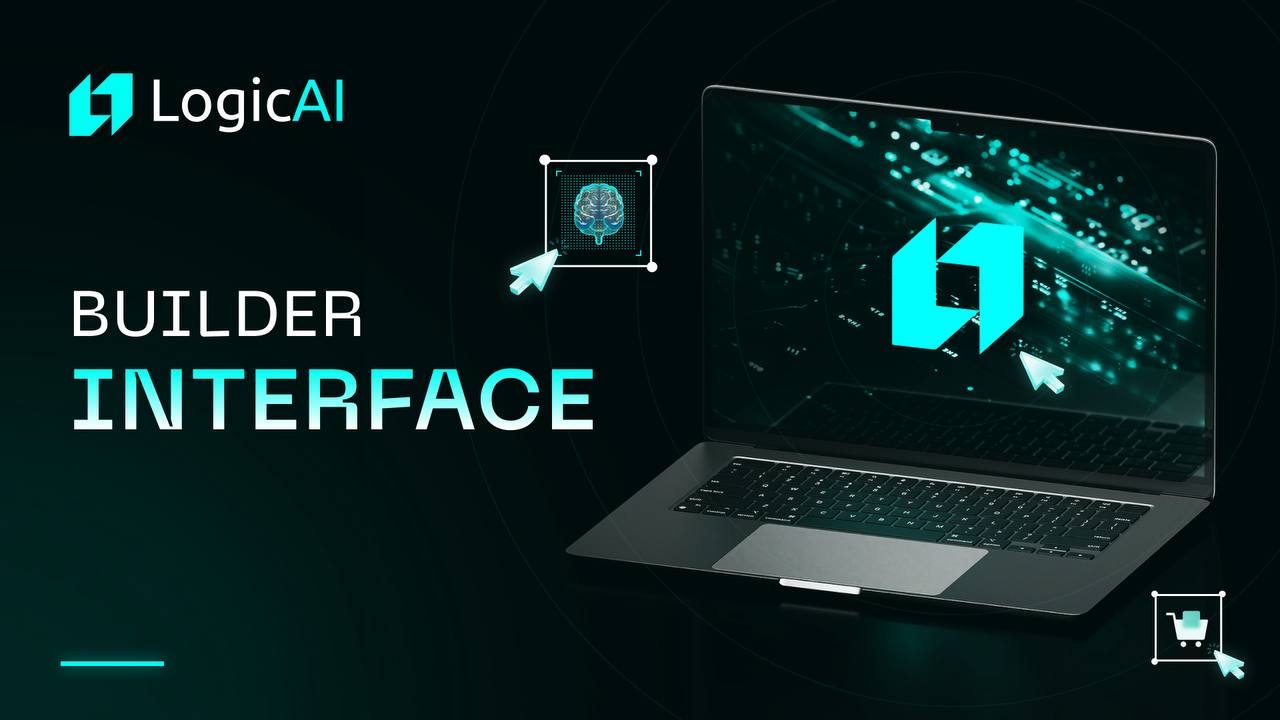No-Code AI Builder
The Logic AI Builder is the heart of our platform, enabling you to create sophisticated AI workflows without writing a single line of code.
Overview
Our drag-and-drop interface transforms complex AI implementation into a visual design process. The builder allows you to:
- Create intelligent workflows by connecting modular components
- Configure AI behaviors through intuitive settings panels
- Test your creations in real-time without deployment
- Share and collaborate on projects with team members
Builder Interface

The Logic AI Builder consists of four main areas:
- Component Library: Access pre-built blocks for inputs, AI processing, logic, and outputs
- Canvas: The main workflow building area where you arrange and connect components
- Properties Panel: Configure the behavior of selected components
- Preview Panel: Test your workflow in real-time
Component Types
Input Components
Capture data from users or external systems:
- Text inputs
- Image uploads
- File selectors
- Database connectors
- API endpoints
Processing Components
Transform, analyze, and generate content:
- GPT text processors
- Image analyzers
- Data transformers
- Decision trees
- Mathematical functions
Logic Components
Control the flow of your workflow:
- Conditional branches
- Loops
- Delays
- Error handling
- Variable storage
Output Components
Present results to users:
- Text displays
- Image viewers
- File downloads
- API responses
- Email notifications
Technical Architecture
While Logic AI offers a no-code experience, the platform is built on a robust technical foundation:

- Visual Builder: Translates your design into executable workflows
- Runtime Environment: Executes workflows with optimized performance
- AI Service Integration: Connects to various AI services including GPT models
- Data Pipeline: Manages data flow and transformations
- Security Layer: Ensures data privacy and access controls
Workflow Example
Here's a visual representation of a simple customer support workflow:
graph TD
A[User Input] -->|Customer Query| B{Query Type?}
B -->|Product Question| C[Product Knowledge Base]
B -->|Billing Issue| D[Payment System]
B -->|Technical Support| E[Technical Knowledge Base]
C --> F[GPT Processor]
D --> F
E --> F
F -->|Generate Response| G[Response Templates]
G --> H[Sentiment Analysis]
H -->|Positive/Neutral| I[Send Response to User]
H -->|Negative| J[Escalate to Human Agent]
I --> K[Request Feedback]
J --> L[Agent Dashboard]
K -->|Feedback| M[Workflow Improvement]
This diagram shows how a customer query flows through the system:
- The query is received and classified
- Relevant information is retrieved from the appropriate knowledge base
- GPT processes the information to generate a response
- The response is analyzed for sentiment
- Based on sentiment, the query is either answered automatically or escalated
- Customer feedback is collected to improve the workflow
Building Your First Workflow
Follow these steps to create a basic workflow:
- Start a New Project: Create a blank project or select a template
- Add Input Component: Drag a "Text Input" component to capture user queries
- Add Processing: Connect to a "GPT Process" component
- Configure AI: Set your desired behavior in the properties panel
- Add Output: Connect to a "Text Output" component to display results
- Test: Use the preview panel to test your workflow with sample inputs
- Refine: Adjust components and settings to optimize performance
Advanced Techniques
As you become familiar with the builder, explore these advanced capabilities:
- Component Chaining: Connect multiple AI processors for complex transformations
- Conditional Logic: Create different paths based on input or AI outputs
- Variable Usage: Store and recall information throughout your workflow
- Custom HTML/CSS: Customize the appearance of user-facing components
- API Integration: Connect your workflow to external services
Next Steps
- Explore our Pre-Built Templates for inspiration
- Learn about GPT-Powered Intelligence capabilities
- Follow our Basic Workflows tutorial